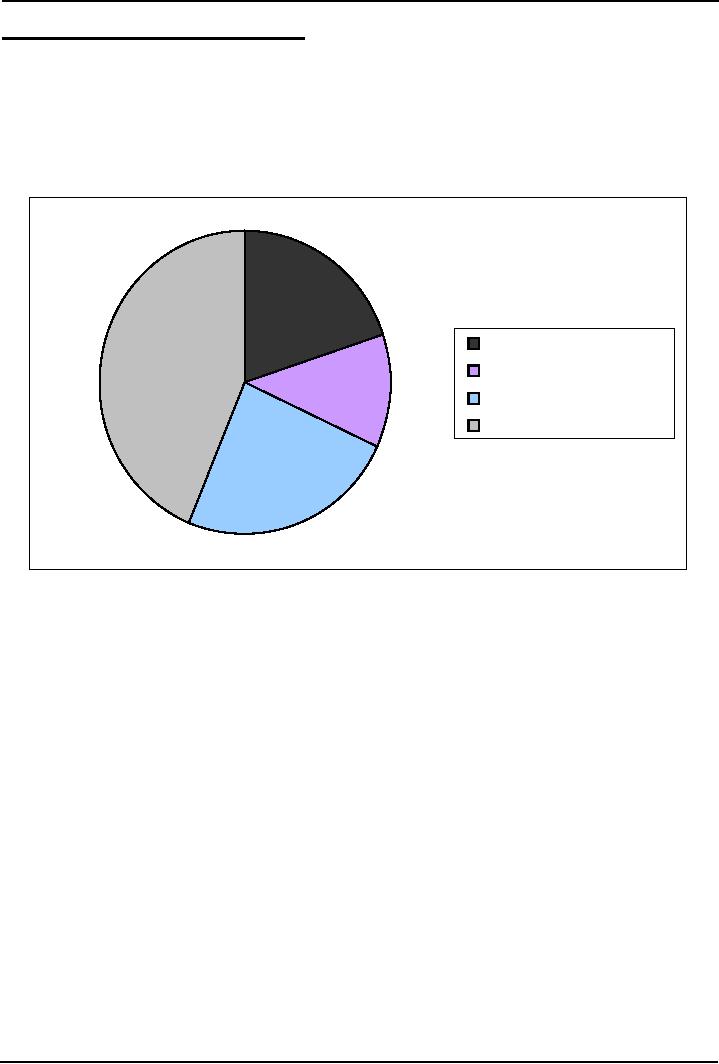 |

Social
Psychology (PSY403)
VU
Lesson
02
INTRODUCTION
TO SOCIAL PSYCHOLOGY
Aims:
Introducing
link of social psychology
with other disciplines and
tracing the historical roots.
Objectives:
1.
Understanding whether social
psychological research outcomes
are just what we
commonly
believe.
2.
Understanding the relation of social
psychology with other
disciplines.
3.
To understand social psychology as a
profession.
4.
Understanding the major theoretical roots
of social psychology.
Is
Social Psychology simply
Common Sense?
A
common refrain voiced by laypeople
and scientists is that most,
if not all, of behavioral
science "is just
common
sense." Social psychology
students are particularly
likely to make this claim,
given that much of
their
prior exposure to social psychology
probably has taken the form
of aphorisms such as
"opposites
attract,"
"absence makes the heart grow
fonder," or "two heads are
better than one." In a
nutshell, it's
difficult
to counter the "common-sense" stigma when so much of
behavior seems to be explainable at
an
intuitive
surface level.
People
think of social psychology as simply
rephrasing what we already know
because its subject
matter
is so personal and familiar. This is
referred to "as if I knew it all
along" phenomena. We
informally
think
about our feelings, thoughts
and actions. Why this informal
thinking will be different
from what
social
psychologists achieve through scientific
observation? In many ways this is
true. Let's look at
these
examples,
they confirm what many of us
already know.
·
"Attending
to people's face leads to the
greatest success in detecting
their lies"
·
"People
are less likely to blame accident
victims if they are similar
to them"
·
"People
who are paid a great deal of
money to perform a boring
task enjoy it more than
those who
are
paid very little"
·
"Men
express more hostile attitude
toward women than women do
toward men"
·
"People
think that physically
attractive people are less
intelligent than those who
are physically
unattractive"
·
"Playing
violent video games or
engaging in contact sports allows
people to "blow off
steam"
making
them less aggressive"
·
"Accident
victims are most likely to
be helped when there are
many bystanders
nearby"
Interestingly,
all of these make sense,
but they have been proven
wrong by social experiments.
Actually
events
are far more "obvious" and
predictable in hindsight than
beforehand. Many a time
social psychology
confirms
our common sense notions but
there are many instances
when the scientific findings
challenge our
current
social beliefs. The problem
with common sense is that we
invoke it after we know the
facts
Experiments
reveal that when people
learn the outcome of an experiment, the outcome
suddenly seems
unsurprising.
Activity
to demonstrate social psychology as
simply commonsense:
You
can do a small activity to
further understand this commonsense
phenomenon. Give half a group
one
psychological
finding, and the other half the
opposite (as given
below).
Psychological
Finding 1:
"Psychologists
have found that when it
comes to making friends, or
falling in love, we are most
attracted
to
people whose traits are
different from our own.
There seems to be wisdom in the old
saying that
"Opposites
attract"
7

Social
Psychology (PSY403)
VU
Psychological
Finding 2:
"Psychologists
have found that when it
comes to making friends, or
falling in love, we are most
attracted to
people
whose traits are similar to
your own. There seems to be
wisdom in the old saying
that "Birds of a
feather
flock together"
Then
you ask both groups whether
results surprised them, and you will
find that both groups will
find the
results
not at all surprising. In
fact, many will state
that they already thought
the same.
Social
Psychology and Related
Fields
Social
psychologists are keenly interested in
how people think about,
influence, and relate to one
another.
But
so are sociologists and personality
psychologists. The question is how
does social psychologist
differ?
Social
Psychology and Sociology:
Edward
Jones (1998) indicates in Handbook of
Social Psychology that two
scientific disciplines known
as
social
psychology are employed in
both, one in psychology, and the other in
sociology. He suggests that
the
larger
of the two is psychological branch:
psychological social psychology, and
sociological social
psychology.
Social
psychology focuses on the influence of
people on the individual,
whereas
Sociology
downplays the role of individual and
focuses on societal variables like
socio-economic-status
(SES),
people's social roles, cultural norms,
etc. On the other hand, social psychology
concentrates on
individual
traits (personality traits and
temperament) and processes that occur at
individual level
Although
there have been calls to merge the two
branches into a single
field, and a joint
psychology-sociology
doctorate program at the university of
Michigan from 1946 to 1967-
their different
orientation
made it doubtful. Despite the fact
that an interdisciplinary social
psychology may never
materialize,
the two fields influence
each other. The recent
interest of social psychology is on the impact
of
culture
on social behavior, while sociological
social psychology's is becoming
increasingly interested in
individual
differences. Regardless of the
crosspollination that has occurred
over the years, both
disciplines
will
continue to provide important
yet differing perspectives on social
behavior.
Areas
of interest in both disciplines:
Sociologists
might study trends in marriage,
divorce, etc., while social
psychologist might examine
how
certain
individuals become attracted to one
another. Similarly, sociologist
studies how racial attitude
of
high-class
people as a group differ
from that of low-class, social
psychologist will be interested how
racial
attitude
develops within the individual.
The
following table illustrates
differences in both
disciplines:
PSYCHOLOGICAL
SOCIAL
SOCIOLOGICAL
SOCIAL PSY
PSY
1.
Central focus on
individual
1.
Focus on group/society
2.
Variations in behavior
2.
Explanations for such
believed
to be due to
societal-based
problems as
people's
interpretation of
poverty,
crime, and deviance.
social
stimuli and
differences
in personality.
8

Social
Psychology (PSY403)
VU
3.
Experimentation as the
3.
Observational and the
primary
research method,
correlational
studies as the
followed
by correlational
primary
method, followed by
studies,
and then
Experimentation
observation.
Social
Psychology and Personality
Psychology
These
both disciplines can be considered as
allies as their focus is on
individual.
May
be for this reason, American
Psychological Association has
included both disciplines in
same journals:
Personality
and Social Psychology
Bulletin, and
Journal
of
However,
both disciplines are also
different from each other on
a few dimensions. For example,
personality
psychologists
are interested in individual differences,
while social psychologists focus on
common
humanity
and in knowing that how
people view and affect one
another. An illustrative example
for the
difference
in both disciplines is that
Personality psychologist may be
interested in that why
some
individuals
are more aggressive than
other, whereas a social
psychologist may be interested in knowing
that
how
social situations can lead
most individuals to act
kindly, cruelly, to conform.
Another difference is
that
as
compared to personality psychology,
social sychology has a brief
history. Many famous theorists
worked
in
the first half of 20th century, like Freud, Jung,
Adler, Horney and
Rogers.
Social
Psychology and
Biology
Majority
of the scientists agree that nature
and nurture together form
us. As area of a field is
determined by
its
length and width, so do biology and
experience together create us.
There is no doubt that our
inherited
human
nature predisposes us to behave in ways that
helped our ancestors survive
and reproduce. Nature
also
endows us with an enormous
capacity to learn. However, social
neuroscientists do not regard
complex
behaviour
like helping and hurting to
just neural or molecular
mechanism. They hence
indicate that to
understand
complex behaviour we must consider
under-the-skin and between-skins
influences
The
Profession of Social
Psychology
PhD
Social psychologists
Majority
of PhD level social psychologists (75%)
are working in Colleges / universities,
while a minority
(17%)
works in Business/government setting. The
pie chart given below shows
this more clearly.
Colleges/universities
Business
Other
9

Social
Psychology (PSY403)
VU
M.Sc.Social
psychologists enjoy job
diversity
The
work distribution of M.A. level social
psychologists is as under:
12%=
4-year colleges
44%=
other non-university academic
settings
20%=
business/ govt.
24%=
human service fields (clinics, health
agencies, etc.)
The
following pie chart illustrates the
same figures.
Business
Colleges
Human
services
Other
educational settings
Current
Trends:
Currently,
social psychologists are involved in
different kinds of works, e.g.,
researching in health
psychology,
environmental psychology, legal
system, and investigating social factors
in clinical
psychology.
In Pakistan, however, the role of social
psychologist is not that diverse and
mainly they are
working
in universities, and NGOs.
Applying
Social Psychology
Social
psychology had always
intimate ties to the larger political and
cultural spheres. It has
addressed
important
social problems in past and present. It
has always focused on real
life problems, e.g., does media
violence
contribute to aggression in society;
how social factors like family support
can influence our
susceptibility
to disease, etc. The
following examples show how social
psychology has responded
to
current
social problems of the time:
·
World
war II stimulated research on
prejudice/conformity
·
1940-50s
Civil war in US initiated
work on prejudice/
stereotypes
·
Higher
violence/ crime rates in 1960-70s
led to research on
aggression.
·
In
1980-1990s skyrocketing health care
costs and growing awareness of
behaviors contributing to
disease
led to research social factors in
health.
·
9/11
event led to research on
terrorism/ suicide
bombing.
·
October
8 2005 earthquake in Pakistan initiated
research on social and psychological effects
of
disasters,
and PTSD.
These
examples illustrate that how
with the changing trends and
circumstances in society, research
also
changed
its focus.
10

Social
Psychology (PSY403)
VU
History
of Social Psychology
Social
psychology is a relatively young
discipline. Although some
work on it started at the end of 19th
century,
most of the growth in social psychology
occurred after 1950s. The history of
social psychology
reveals
its American roots. The
following periods illustrate the history
of social psychology:
The
early years
(1884-1934)
The
coming of age
(1935-1945)
Rapid
expansions (1946-1969)
Crisis
and re-assessment (1970-1984)
An
expanded global view
(1985-present)
The
Early Years:
(1884-1934)
Norman
Triplett at Indiana University
can be considered the first empirical
social scientist as he conducted
the
first social psychological
experiment on that how the performance of
a person does change when
other
people
are present. He noticed that
a bicycle racer's speed was faster
when he was paced by other
cyclists
than
when he was alone. Based on
this observation, he devised the first
exp. To learn what caused
these
different
racing times, he asked children to
wind line on a finishing
reel both in the presence of
other
children
and alone. The results
showed that children did
faster when with other
children. This
experiment
was
published in 1897. This
introduced the Experimental Method in
social psychology. However, the
credit
to
establish social psychology as a distinct
discipline goes to William
McDougall (an English) and
Edward
Ross
(an American), who published the
first books bearing this
title. Although these two
published books
on
social psychology, Social psychology
still lacked a distinct
identity. Moreover, there was no
answer to
the
question that how does
social psychology differs
from other disciplines, and
what are its methods
of
inquiry,
etc.
Floyd
Allport was the person who
served this purpose. He
wrote a third book on social
psychology
and
indicated very clearly "I
believe that only within the
individual can we find the
behavior mechanisms
and
consciousness which are
fundamental in the interactions between
individuals. There is no
psychology
of
groups which is not essentially
and entirely a psychology of
individuals. psychology in all
its branches is
a
science of the individual" (1924,
p.4). He conducted studies on conformity,
nonverbal communications,
and
social facilitation and demonstrated in
his book that how
carefully conducted research could
provide
insight
into a wide range of social
behaviours.
The
Coming of Age:
1935-1945
First
3 decades of this century were
spent in generating basic
concepts and sound research
methods in
social
psychology. Then two events
occurred that played a dominant
role in the development of social
psychology
at this critical juncture
(World War II) in its
history:
1.
Great depression in the
USA
2.
Social and political upheaval in
Europe
Following
the stock market crash in 1929,
many young psychologists were unable to
find or hold jobs.
Due
to
social forces, many adopted the liberal
ideals of Roosevelt, or more radical
views of communist or
socialist
parties. In 1936, these social
psychologists established Society for the
Psychological Study of
Social
Issues (SPSSI). They wanted to
apply their newly developed
theories and political activism to
real-
world
problems.
The
rise of fascism in Germany, Spain,
and Italy created a strong
anti-intellectual atmosphere in many
of
Europe's
educational institutions. As a result,
many leading social psychologists like
Fritz Heider, Kurt
Lewin,
& Theodore Adorno, immigrated to
America. There along with
American social psychologists
11

Social
Psychology (PSY403)
VU
applied
knowledge of human behaviour in a variety
of war time programs: undermining of
enemy morale;
selection
of officers for the office of strategic
services, etc.
During
this time of global strife,
one of the most influential social
psychologist was Kurt Lewin
who was a
Jewish
refugee from Germany. He stood as the
most influential social
psychologist of his time. He
talked
about
the debate of two faces of social
psychology: pure and applied and
indicated that "No
research
without
action and no action without research".
He also served as the president of SPSSI
in 1941. By his
death
in 1947 he had provided many of
social psychology's defining
characteristics.
In
postwar period, prospects were bright
for social psychologists;
they had started enjoying
high
stature
in scientific community. Many of
their mentors were European. They
established new research
facilities,
secured govt. grants, and
most importantly started
training graduate students. These
future social
psychologists
were white, male, and middle
class
Social
psychology, although flourishing in
USA but war had virtually
destroyed the discipline
overseas.
Postwar, USA emerged as the
un-challenged world power,
exported its material goods
as well as
social
psychology.
Rapid
Expansions (1946-1969)
With
its infusion of European intellectuals
and recently trained young
American social psychologists, the
mature
science of social psychology expanded its
theoretical and research base. A
lot of research started
on
new
dimensions. For example, Theodore
Adorno and his colleagues (1950)
wanted to know how a
civilized
society
like Germany could fall
under the influence of a dictator
like Hitler. They studied
the psychological
parameters
of the authoritarian personality. Some
years later, Stanley Milgram
(1963) extended this line
of
research
in his now famous obedience experiments,
which examined the conditions
that make people more
likely
to obey destructive authority
figures. Some psychologists also
focused their attention on
the
influence
that group had on the individual
(Asch, 1956) and of the power of
persuasive communication
(Hoveland
et al., 1949). Arguably, the
most significant line of
research and theorizing
during this time
was
Leon
Festinger's theory of cognitive
dissonance (1957), which
maintains that people's
thoughts and actions
are
motivated by a desire to maintain
cognitive consistency.
The
decade of the 1960s was a
time of turmoil in USA with
the country caught in the rip of
political
assassinations, urban violence and social
protests, and the Vietnam war. People
were searching for
constructive
ways to change society for the
better. Follwing this lead,
social psychologists devoted
research
time
on aggression, love, helping,
and attraction. The
groundbreaking research of Hatfield
and Berscheid
(1969)
on interpersonal and romantic attraction
was not only important in
widening the scope of
social
psychological
inquiry but it also
generated considerable controversy
outside the field. A number of
public
officials
and ordinary citizens thought that
social scientists need not
try to understand the mysteries of
romance.
During
the 1960s the federal govt. of
USA expanded attempts to cure societal
ills with the guidance
of
social scientists.
Crisis
and Reassessment:
1970-1984
After
World War II, Theodore
Newcomb (1951) expressed
concern that expectations were greater
than
anything
that could be delivered in the
near future. As the usefulness
and ethics of experimental
research
came
under increased scrutiny, a "crises of
confidence" emerged (Elms, 1975). At
that time,
accusations
started
coming from women and
minorities that social
psychology was reflecting
biases of a white,
male-
dominated
view of reality. Out of this
crisis more vital and inclusive
field of social psychology
emerged.
Rigorous
ethical standards were established and
social psychology began
moving toward more responsible
position.
Although experimental method
still remained the method of choice, researchers
started using
correlational
methods in research.
One
final important development
during this time period
was the importing of ideas
from cognitive
psychology,
which greatly enhanced
theory and research in all
areas of social psychology.
.
12

Social
Psychology (PSY403)
VU
An
expanded global view of social
psychology: 1985-Present
In
the 1970s both European and Latin
American Social psychology
Associations were formed.
Social
psychology
overseas emphasized more on intergroup
and societal variables in explaining social
behavior,
and
began to reshape the discipline.
Social psychologists around the world
started exchanging ideas,
and
collaborated
on multi-national studies (Fiske et
al., 1998; Vala et al,
1996).
Research
question were raised about
behaviour as being "culture
specific" or due to "shared
evolutionary
heritage". Although social psychology's
professional centre of gravity
still resides in the
USA,
European
and third world social psychology
offers the entire field
opportunities to escape what
some
consider
the limitations of this "gravitational
pull" to perceive new worlds
of reality (Shinha, 2003;
Tam et
al.,
2003)
Contemporary
social psychology continues the legacy of
Kurt Lewin and SPSSI by
applying knowledge to
a
wide arena of everyday life,
such as law, health,
education, sports and
business.
Following
a criticism on concentrating too
much on negative social behavior and
flaws in human nature
(Krueger
& Funder, 2004), current
research is focusing on both
constructive and destructive
social
behavior.
In Pakistan, some work is also
being conducted on positive dimensions of human
social
behaviour.
Readings
4.
Franzoi, S.L. (2006).
Social
Psychology. New
York: McGraw Hill. Chapter
1.
5.
Lippa, R.A. (1994).
Introduction
to Social Psychology. Belmont:
Brooks/Cole Publishing
Company.
Chapter 1.
13
Table of Contents:
- INTRODUCTION TO SOCIAL PSYCHOLOGY:Readings, Main Elements of Definitions
- INTRODUCTION TO SOCIAL PSYCHOLOGY:Social Psychology and Sociology
- CONDUCTING RESEARCH IN SOCIAL PSYCHOLOGY:Scientific Method
- CONDUCTING RESEARCH IN SOCIAL PSYCHOLOGY:Evaluate Ethics
- CONDUCTING RESEARCH IN SOCIAL PSYCHOLOGY RESEARCH PROCESS, DESIGNS AND METHODS (CONTINUED)
- CONDUCTING RESEARCH IN SOCIAL PSYCHOLOGY OBSERVATIONAL METHOD
- CONDUCTING RESEARCH IN SOCIAL PSYCHOLOGY CORRELATIONAL METHOD:
- CONDUCTING RESEARCH IN SOCIAL PSYCHOLOGY EXPERIMENTAL METHOD
- THE SELF:Meta Analysis, THE INTERNET, BRAIN-IMAGING TECHNIQUES
- THE SELF (CONTINUED):Development of Self awareness, SELF REGULATION
- THE SELF (CONTINUE…….):Journal Activity, POSSIBLE HISTORICAL EFFECTS
- THE SELF (CONTINUE……….):SELF-SCHEMAS, SELF-COMPLEXITY
- PERSON PERCEPTION:Impression Formation, Facial Expressions
- PERSON PERCEPTION (CONTINUE…..):GENDER SOCIALIZATION, Integrating Impressions
- PERSON PERCEPTION: WHEN PERSON PERCEPTION IS MOST CHALLENGING
- ATTRIBUTION:The locus of causality, Stability & Controllability
- ATTRIBUTION ERRORS:Biases in Attribution, Cultural differences
- SOCIAL COGNITION:We are categorizing creatures, Developing Schemas
- SOCIAL COGNITION (CONTINUE…….):Counterfactual Thinking, Confirmation bias
- ATTITUDES:Affective component, Behavioral component, Cognitive component
- ATTITUDE FORMATION:Classical conditioning, Subliminal conditioning
- ATTITUDE AND BEHAVIOR:Theory of planned behavior, Attitude strength
- ATTITUDE CHANGE:Factors affecting dissonance, Likeability
- ATTITUDE CHANGE (CONTINUE……….):Attitudinal Inoculation, Audience Variables
- PREJUDICE AND DISCRIMINATION:Activity on Cognitive Dissonance, Categorization
- PREJUDICE AND DISCRIMINATION (CONTINUE……….):Religion, Stereotype threat
- REDUCING PREJUDICE AND DISCRIMINATION:The contact hypothesis
- INTERPERSONAL ATTRACTION:Reasons for affiliation, Theory of Social exchange
- INTERPERSONAL ATTRACTION (CONTINUE……..):Physical attractiveness
- INTIMATE RELATIONSHIPS:Applied Social Psychology Lab
- SOCIAL INFLUENCE:Attachment styles & Friendship, SOCIAL INTERACTIONS
- SOCIAL INFLUENCE (CONTINE………):Normative influence, Informational influence
- SOCIAL INFLUENCE (CONTINUE……):Crimes of Obedience, Predictions
- AGGRESSION:Identifying Aggression, Instrumental aggression
- AGGRESSION (CONTINUE……):The Cognitive-Neo-associationist Model
- REDUCING AGGRESSION:Punishment, Incompatible response strategy
- PROSOCIAL BEHAVIOR:Types of Helping, Reciprocal helping, Norm of responsibility
- PROSOCIAL BEHAVIOR (CONTINUE………):Bystander Intervention, Diffusion of responsibility
- GROUP BEHAVIOR:Applied Social Psychology Lab, Basic Features of Groups
- GROUP BEHAVIOR (CONTINUE…………):Social Loafing, Deindividuation
- up Decision GROUP BEHAVIOR (CONTINUE……….):GroProcess, Group Polarization
- INTERPERSONAL POWER: LEADERSHIP, The Situational Perspective, Information power
- SOCIAL PSYCHOLOGY APPLIED: SOCIAL PSYCHOLOGY IN COURT
- SOCIAL PSYCHOLOGY APPLIED: SOCIAL PSYCHOLOGY IN CLINIC
- FINAL REVIEW:Social Psychology and related fields, History, Social cognition